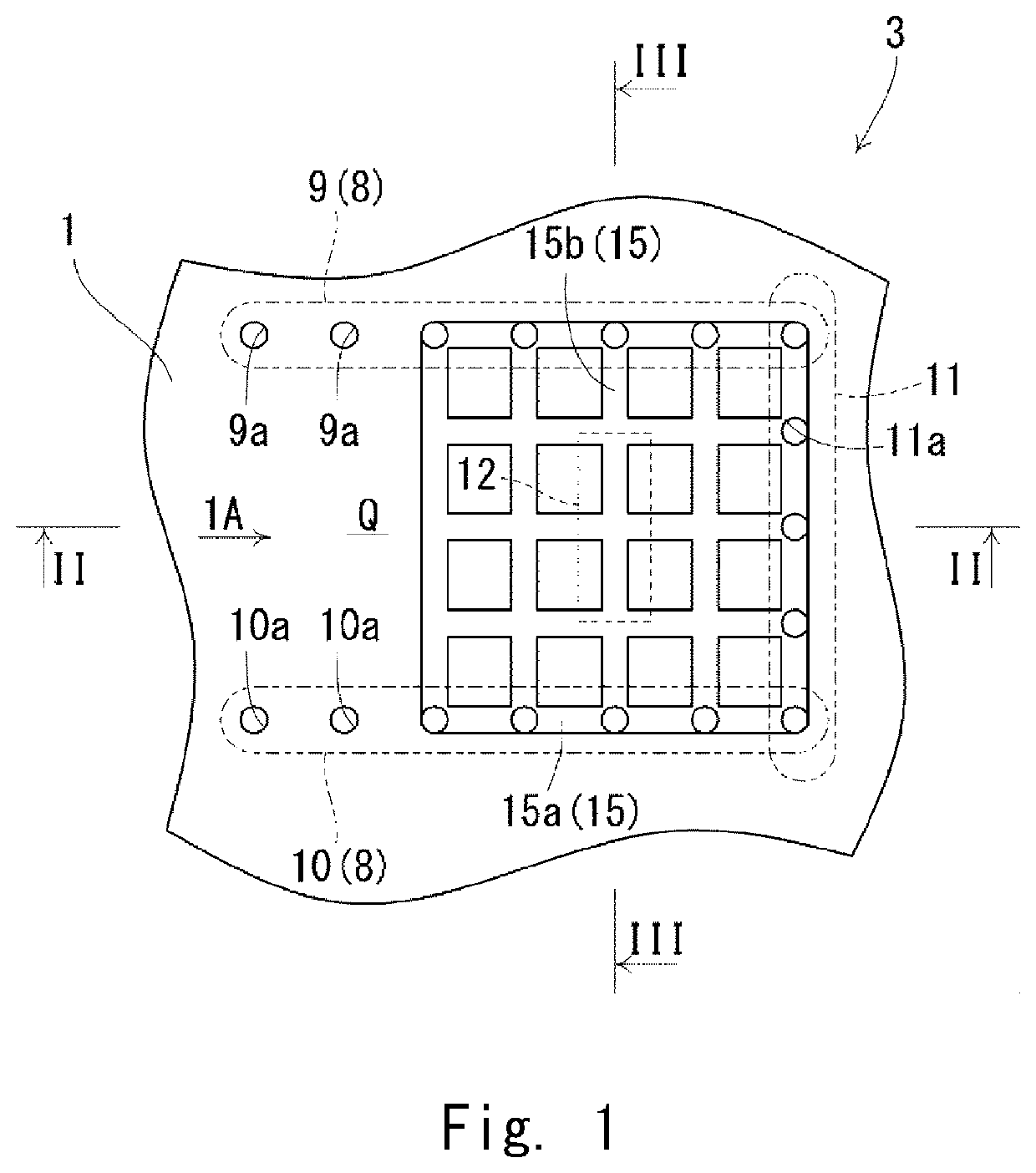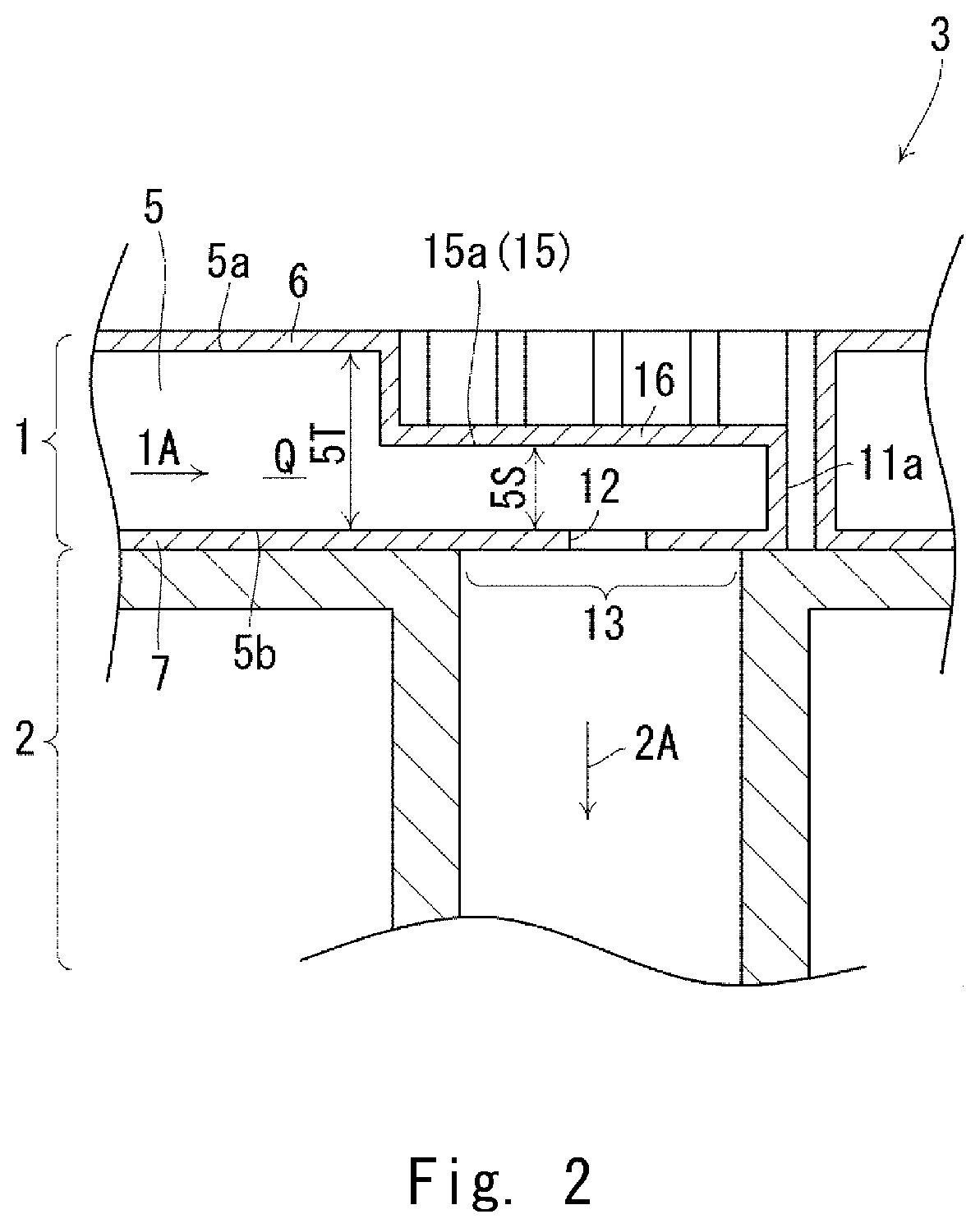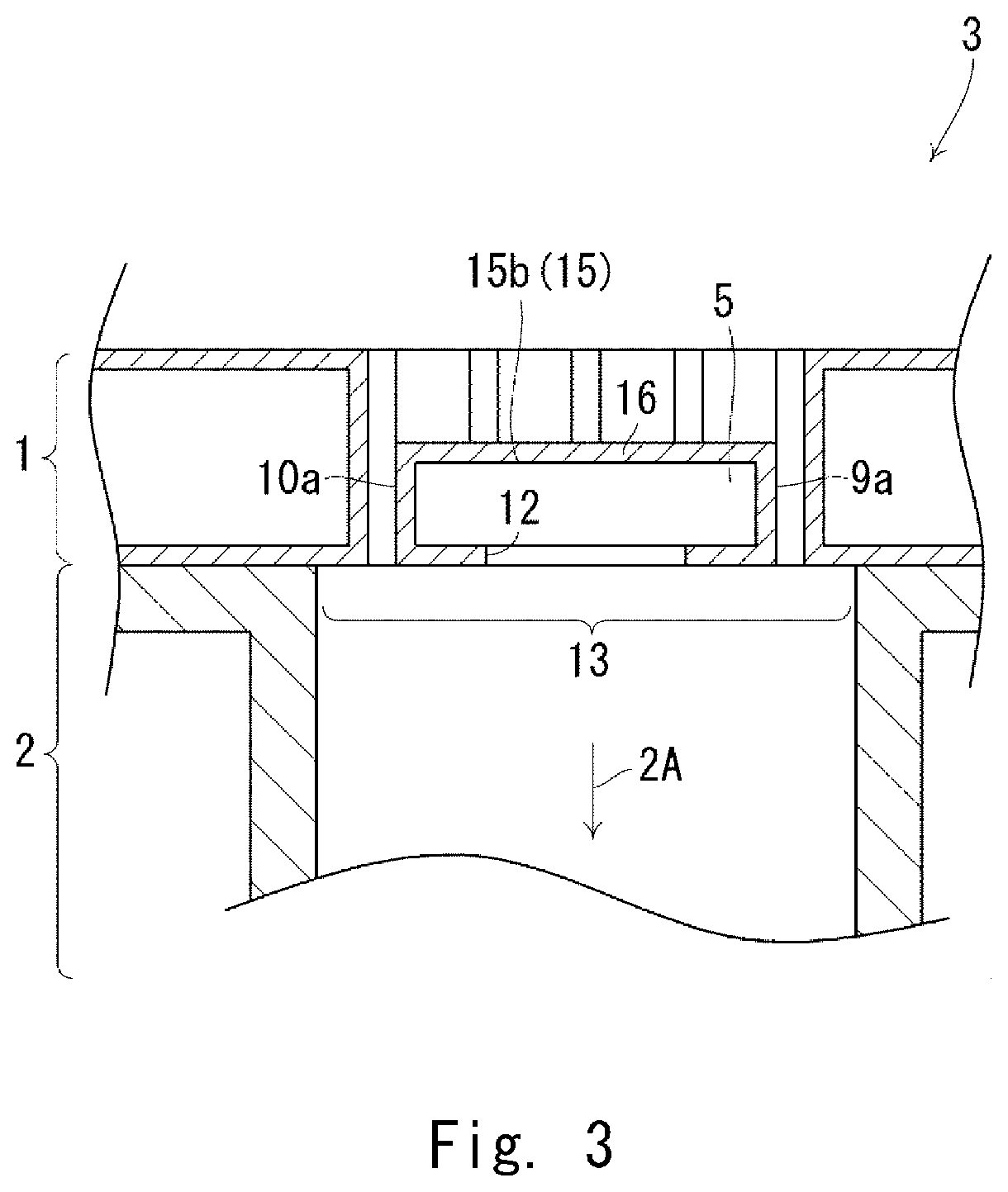Connection structure between dielectric waveguide line and waveguide
a dielectric waveguide and connection structure technology, applied in the direction of waveguides, electrical devices, coupling devices, etc., can solve the problems of difficult to employ ltcc in the sub-terahertz band, low dimensional accuracy of ltcc, and low loss of ltcc, etc., to achieve satisfactory transmission characteristics
- Summary
- Abstract
- Description
- Claims
- Application Information
AI Technical Summary
Benefits of technology
Problems solved by technology
Method used
Image
Examples
first example embodiment
[0026]Hereinafter, a first example embodiment will be described with reference to FIGS. 1 to 3. FIG. 1 is a plan view of a connection structure according to the first example embodiment. FIG. 2 is a cross-sectional view taken along the line II-II of FIG. 1. FIG. 3 is a cross-sectional view taken along the line of FIG. 1.
[0027]FIGS. 1 to 3 show a connection structure 3 between a dielectric waveguide line 1 and a rectangular waveguide 2. As shown in FIG. 2, the connection structure 3 includes a dielectric waveguide line 1 and a rectangular waveguide 2. The dielectric waveguide line 1 and the rectangular waveguide 2 are connected to each other in such a way that a transmission direction 1A of an operating frequency signal in the dielectric waveguide line 1 becomes orthogonal to a transmission direction 2A of a operating frequency signal in the rectangular waveguide 2. The operating frequency signal is a specific example of a high frequency signal.
[0028]As shown in FIGS. 1 and 2, the di...
second example embodiment
[0055]Next, a second example embodiment will be described with reference to FIG. 4. Hereinafter, a difference between this example embodiment and the first example embodiment will be mainly described, and the repeated description will be omitted.
[0056]As shown in FIG. 4, in this example embodiment, the plurality of recesses 15 do not include the plurality of transmission-direction translational recesses 15a, and instead include only the plurality of transmission-direction orthogonal recesses 15b. The plurality of transmission-direction orthogonal recesses 15b are formed in the vicinity of the coupling window 12. Thus, the area where the plurality of recesses 15 are formed is smaller as compared with the first example embodiment, and thus the uniformity of the function as the upper surface of the waveguide is deteriorated, but productivity and mechanical strength can be improved.
third example embodiment
[0057]Next, a third example embodiment will be described with reference to FIG. 5. Hereinafter, a difference between this example embodiment and the first example embodiment will be mainly described, and the repeated description will be omitted.
[0058]As shown in FIG. 5, in this example embodiment, the plurality of recesses 15 do not include the plurality of transmission-direction orthogonal recesses 15b, and instead include only the plurality of transmission-direction translational recesses 15a. The plurality of transmission-direction translational recesses 15a are formed in the vicinity of the coupling window 12. Thus, the area where the plurality of recesses 15 are formed is smaller as compared with the first example embodiment, and thus the uniformity of the function as the upper surface of the waveguide is deteriorated, but productivity and mechanical strength can be improved.
PUM
| Property | Measurement | Unit |
|---|---|---|
| frequency | aaaaa | aaaaa |
| thickness | aaaaa | aaaaa |
| thickness | aaaaa | aaaaa |
Abstract
Description
Claims
Application Information
 Login to View More
Login to View More - R&D
- Intellectual Property
- Life Sciences
- Materials
- Tech Scout
- Unparalleled Data Quality
- Higher Quality Content
- 60% Fewer Hallucinations
Browse by: Latest US Patents, China's latest patents, Technical Efficacy Thesaurus, Application Domain, Technology Topic, Popular Technical Reports.
© 2025 PatSnap. All rights reserved.Legal|Privacy policy|Modern Slavery Act Transparency Statement|Sitemap|About US| Contact US: help@patsnap.com



